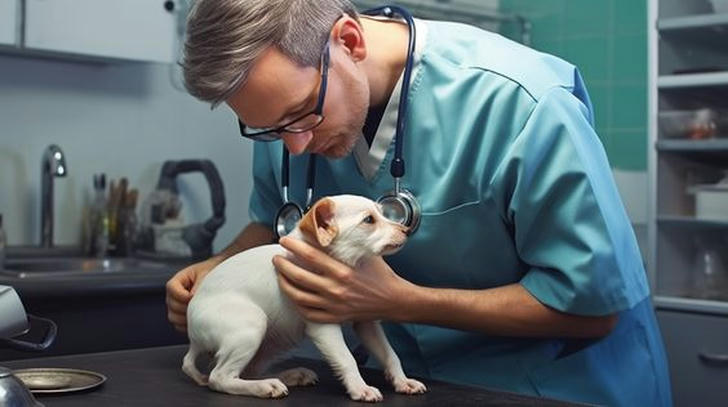Common Pet Diseases, Symptoms, Treatments, and Prevention

As pet owners, we all want our furry friends to live long, happy, and healthy lives. However, just like humans, pets can suffer from various diseases. Understanding these common conditions, their symptoms, treatments, and preventive measures is crucial for every pet owner. In this article, we will explore some prevalent pet diseases, share real-life examples, and provide actionable solutions to keep your pets healthy.
1. Obesity
Symptoms: Obesity is one of the most common health issues in pets, particularly in dogs and cats. Symptoms include difficulty in movement, excessive panting, and a noticeable increase in weight. For instance, Max, a Labrador Retriever, was found to weigh over 100 pounds, significantly more than the breed's ideal weight of 55 to 80 pounds. His owner, Sarah, noticed Max was lethargic and had trouble jumping into the car.
Treatment: Concerned about Max's health, Sarah took him to the vet, where they initiated a weight loss program that involved a special diet and increased exercise. The vet recommended low-calorie food and encouraged Sarah to take Max on daily walks. After six months of following the new routine, Max lost 20 pounds, regained energy, and was able to play fetch again.
Prevention: Preventing obesity involves regular exercise and a balanced diet. Owners should measure food portions and avoid excessive treats. Consulting a veterinarian for dietary recommendations tailored to your pet's needs is also advisable.

2. Dental Disease
Symptoms: Dental disease is often overlooked by pet owners. Symptoms include bad breath, difficulty eating, and swollen gums. Bella, a five-year-old Beagle, began showing discomfort while eating her favorite kibble. Her owner, Mark, noticed her breath had a foul odor, which prompted a visit to the vet.
Treatment: At the veterinary clinic, Bella was diagnosed with periodontal disease. The vet performed a dental cleaning and suggested a routine of regular brushing at home. Mark started brushing Bella’s teeth three times a week, and after a month, her breath improved significantly, and she was back to enjoying her meals.
Prevention: Regular dental check-ups, professional cleanings, and at-home dental care can prevent dental diseases. Chew toys and dental treats can also help reduce plaque buildup.

3. Allergies
Symptoms: Allergies in pets can manifest as skin irritations, excessive scratching, and ear infections. Charlie, a three-year-old Golden Retriever, developed itchy skin and ear infections after being exposed to pollen in spring. His owner, Lisa, noticed that Charlie was scratching incessantly and shaking his head.
Treatment: After a visit to the vet, Charlie was diagnosed with seasonal allergies. The vet prescribed antihistamines and recommended bathing him with hypoallergenic shampoos. Lisa also started to monitor pollen levels, limiting Charlie's outdoor play during high pollen days. Within weeks, Charlie's symptoms improved dramatically, and he was much more comfortable.
Prevention: Preventing allergies involves identifying and avoiding allergens. Regular grooming can help minimize allergens in your home, and keeping pets' living spaces clean can also reduce exposure.

4. Heartworm Disease
Symptoms: Heartworm disease is a serious condition caused by parasites. Symptoms may include coughing, lethargy, and weight loss. Lucy, a six-year-old Dachshund, started coughing and losing weight, which alarmed her owner, Tom.
Treatment: Tom took Lucy to the vet, where she was diagnosed with heartworm disease. The vet outlined a treatment plan that included injections and a strict rest period. Lucy’s treatment lasted several months, and Tom learned the importance of follow-up appointments to monitor her recovery. After her treatment, Lucy regained her vitality and could play with her toys again.
Prevention: Preventing heartworm involves regular testing and administering preventative medication, especially in warmer months when mosquitoes are prevalent. Pet owners should consult their vets for the best preventative options.

5. Diabetes
Symptoms: Diabetes in pets can present as increased thirst, frequent urination, and weight loss. Toby, a nine-year-old cat, exhibited excessive thirst and was losing weight despite eating normally. His owner, Emma, was worried and took him to the vet.
Treatment: After a thorough examination, the vet diagnosed Toby with diabetes. The treatment involved insulin injections and dietary changes. Emma learned how to monitor Toby’s glucose levels and adjusted his diet accordingly. After a few months of diligent care, Toby stabilized, and his weight returned to a healthier range.
Prevention: While diabetes cannot always be prevented, maintaining a healthy weight and diet can reduce the risk. Regular vet check-ups help catch early signs.

Conclusion
Understanding common pet diseases, their symptoms, treatments, and preventive measures can significantly impact your pet’s quality of life. By being proactive, pet owners can ensure their furry companions stay healthy and happy. Remember to consult your veterinarian regularly, maintain a balanced diet, and engage in regular exercise to keep your pets in the best condition possible. The journey of pet ownership is a shared responsibility—let’s keep our pets healthy together.
